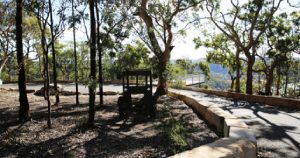[vc_row][vc_column width=”1/6″ offset=”vc_col-lg-1/5 vc_col-md-1/5 vc_col-xs-1/5″][us_image image=”81787″ size=”thumbnail” align=”left” style=”circle” has_ratio=”1″][/vc_column][vc_column width=”1/12″ offset=”vc_col-lg-4/5 vc_col-md-4/5 vc_col-xs-4/5″][vc_column_text]By Lachlan Turner[/vc_column_text][us_post_date][/vc_column][/vc_row][vc_row][vc_column][vc_column_text]Cream and yellow coloured flowers are quite common during spring and summer in bushland reserves.
Flowering around December to January one of the larger cream coloured flowers is the Common Conestick (Petrophile pulchella), which is characterised firstly by its cluster of elongated or globular shaped flower heads, and secondly by the distinctive rounded foliage which has bright yellow tips.

One is the Broad-leaf Drumstick (Isopogon anenomifolius) whose flower is a brighter yellow with many short stems ending in small globular heads. These heads appear to explode into a mass of minute fluffy flowers. Its flowering period is generally from August to December. This shrub can grow to around 1 to 2 meters in similar habitat to the Conesticks.
Yet another similar plant growing to around 2 meters tall, is the Narrow-leaf Drumstick (Isopogon anethifolius), which as its name suggests has a narrower leaf structure. Its flowering period is from September to December. Both plants produce spherical seed pods which initially have a grey fluffy covering.
Any one of these showy plant species can be grown as a massed planting in the home garden or as a feature plant in containers.







